Excited at the appearance of Professor Hulk in AVENGERS: ENDGAME? I know I was. So what better time to get to know everyone’s favorite Green Goliath a little better? Our story begins, as many of these columns seem to, with Marvel Editor-in-Chief Stan Lee.
It was 1962 and Stan was looking to follow up the success of his first big hit, THE FANTASTIC FOUR. Another team book was considered, but Stan didn’t want to repeat himself. He then thought about doing a “Superman”-style strong man, but rejected that notion as well as being too routine. Then inspiration struck: what about a comic where the good guy was also the bad guy? Stan had long loved Mary Shelley’s FRANKENSTEIN, as well as the classic Universal movies, and always empathized with the misunderstood creature. Why not transfer that notion, the misunderstood monster, to comics? To add more suspense and a more relatable hero to the mix, Stan borrowed from Robert Louis Stevenson’s DR. JEKYLL AND MR. HYDE as well, giving his new monster hero the ability to change back and forth from man to beast. All Stan needed now was a name, and I’ll let The man himself take it from here, courtesy of ORIGINS OF MARVEL COMICS:
Now all that remained was to find a name…I knew I needed a perfect name for a monstrous, potentially murderous hulking brute who – and then I stopped. It was the word “hulking” that did it. It conjured up the perfect mental image. I knew I had found his name. He had to be: The Hulk.
“The Incredible Hulk” it was, and with that, Stan sent his synopsis off to Marvel’s ace, Jack Kirby, who illustrated the Hulk’s first issue and designed all the major characters. Stan and Jack’s creation hit newsstands in Month 1962, with the premiere issue of THE INCREDIBLE HULK.
The story opens with our introduction of Dr. Bruce Banner (later amended to Robert Bruce Banner, after Stan had a bit of a brain freeze and started referring to the character as “Bob Banner”), nuclear scientist and creator of the Gamma Bomb, a potentially devastating new atomic weapon about to be tested by the U.S. military. Banner must contend with the demands of General Thaddeus “Thunderbolt” Ross, who wants the bomb detonated immediately, and thinks the civilian Banner lacks the fortitude to do so. Bruce is defended by Ross’s daughter Betty, who seems to have eyes for the shy scientist.
Finally, Banner is ready to test the device, and the countdown commences. Surveying the detonation site, Banner notices a teenager cruising his car straight through the heart of ground zero. Yelling at his assistant to halt the countdown, Banner runs out to get the boy to safety. Unfortunately, Banner had no idea that his assistant Igor was actually a dirty Communist spy, sent by his Soviet masters to obtain the secrets of the Gamma Bomb. (You’d think the name “Igor” might have been something of a clue…) Tired of trying to talk the secrets out of Banner, Igor decides to eliminate him and look for the plans himself in Banner’s quarters, and does not halt the countdown.
Banner reaches the test site just soon enough to throw the teenager, young Rick Jones, into a protective trench, but is too late to save himself, and catches the full blast of Gamma radiation released by the explosion.
Banner comes to later that night, where he’s been locked in an observation room, along with young Jones, who came through the ordeal without a scratch. Banner, however, was not so lucky. As night falls. Banner begins to mutate before Jones’ eyes, growing much taller and more muscular, bursting through the seams of his clothes, with his skin turning a deathly gray color.
(Yes, I know it’s green in the pictures, and isn’t the Hulk supposed to be green, anyway? Here’s the deal. In the first issue of the Hulk as published, the Hulk is gray in color, as Stan intended. However, when he saw the final printed magazine, he decided that the gray color wasn’t coming through the printing process consistently enough, and changed the Hulk’s color to green, and green it remained until the Gray Hulk was re-introduced in 1986. However, these images are taken from the aforementioned 1978 ORIGINS OF MARVEL COMICS trade paperback, at a time when they never expected the Gray Hulk to make a return, so the issue was helpfully re-colored green. Thus endeth the explanation.)
At first, Banner’s transformations into the Hulk (as Banner’s alter ego was inadvertently named by a panicky soldier) were triggered by sunset and sunrise, with the Hulk only emerging at night. For a short while, Banner himself would trigger the transformations in an attempt to control the Hulk (while Banner knew of the Hulk’s existence, he had no memory of his actions as the Hulk, while the childlike Hulk would often forget that he was Banner), but in time a new catalyst developed, one which really cemented the success of the series.
When Bruce Banner would become upset, angry or otherwise placed under stress, he would lose control and transform into the Hulk. In turn, as the Hulk would grow more and more angry, his strength would increase exponentially, with seemingly no limit. Or, as Hulk himself was wont to say from time to time, “The madder Hulk gets, the stronger Hulk gets!”
Perhaps due to shaky sales or just an editorial indecision about the direction of the series, the Hulk’s magazine only lasted six issues. After that, Stan employed Hulk as a kind of pinch-hitting guest-star, touring him around the various Marvel series, before landing him in a secure spot as co-star of TALES TO ASTONISH, along with perennial Marvel also-ran Ant-Man. It was in the TALES run, with art by SPIDER-MAN creator Steve Ditko and later a return from Kirby, that Stan really hit his stride with the Hulk series, establishing the “Hulk-get-mad, Hulk-get-strong” motif and building up a strong supporting cast of friends and foes. Rick Jones and Betty remained Banner’s closest friends, although only Jones (who would later repeat his sidekick role for Captain America, Captain Marvel and even Rom the Spaceknight) knew the secret of Banner’s curse. General “Thunderbolt” Ross also stayed in the forefront as the Hulk’s chief antagonist and major thorn in the side of Bruce Banner. Even worse, Ross now had a co-conspirator in the weaselly Major Glenn Talbot, who was not only convinced that Banner was secretly working for the Soviets, but also had designs on Betty as well.
Some years later, believing Banner dead, Betty actually married the pencil-mustachioed twerp on the rebound, but dropped him like yesterday’s papers when Bruce resurfaced. Eventually Talbot spun out of control and stole an experimental military vehicle, the War Wagon, and was killed in a suicidal attack on the Hulk. Some guys just cannot handle being dumped…
The two strongest contributions from the TALES TO ASTONISH run would have to be the two most popular adversaries for the Hulk: the Leader and the Abomination. The Leader first showed his long face in TALES TO ASTONISH #62, by Lee and Ditko. An average laborer working clean-up in a chemical research plant, the man who would become the Leader was accidentally caught in the blast of an experimental Gamma ray cylinder. Inexplicably, he survived, but soon discovered after his recovery a voracious desire for knowledge. Released from the hospital, he continued his non-stop studies and research, retaining exact recall of everything he read.
In his case, the Gamma radiation had a delayed physical effect, and some weeks after the blast his skull and brain grew to oversized proportions and his skin changed to the same green color as the Hulk, and for him, the change was permanent.
Abandoning his former identity, he dubbed himself “The Leader,” and turned his now unmatched intellect to matters of world conquest. The Leader has often tried to use the Hulk as his unwitting pawn in his schemes, with little success.
Where the Leader was more than a match for the Hulk in Gamma-induced intelligence, the Abomination proved to be an equal threat, and then some, when it came to Gamma-induced strength. Debuting in TALES TO ASTONISH #90, Emil Blonsky was yet another Commie spy sent to infiltrate and sabotage General Ross’ Air Force base. (And you know, maybe if Ross and Talbot weren’t so busy chasing Banner around and yelling “Traitor!” all the time, they might have noticed all these guys with Russian-sounding names suddenly getting work at the military base.) Hiding in Bruce Banner’s lab, Blonsky sees Banner readying a machine which, unbeknownst to Blonsky, was designed to bombard Banner’s body with enough Gamma radiation to finally kill him and end the threat of the Hulk forever. When security guards bust in and haul off Banner (no doubt to face the latest trumped-up treason charge from Ross and Talbot), Blonsky decides to use the machine on himself, thinking it the latest in Banner’s Gamma weapons.
The machine bombarded Blonsky with a far more intense blast of Gamma radiation than the one that transformed Banner into the Hulk. Luckily for Emil, he happened to possess a rare genetic factor, just as Banner and The Leader had, that prevented him from being killed by the massive dose of radiation. (Most people exposed to Gamma radiation just get cancer, it turns out.) The increased Gamma rays gave Blonsky strength much greater than that of the Hulk, and unlike Banner, he retained his intelligence as well.
The downside? The Gamma rays mutated him dramatically, transforming him into a hideous creature that Betty Ross named “the Abomination.” Although Banner later invented a device to drain some of the excess Gamma radiation out of the Abomination, taking away some of his strength, the Abomination still maintained a baseline strength level greater than that of a relatively calm Hulk. If Hulk gets steamed, though, all bets are off.
The INCREDIBLE HULK comic went along in a happy rut throughout most of the ‘70s and ‘80s, with things finally shaking up in 1985 with the arrival of writer/artist John Byrne, who, among other things, physically separated Bruce Banner from the Hulk and finally saw Bruce and Betty married, despite “Thunderbolt” showing up and blowing a 32-caliber hole through best man Rick Jones.
Not long after that, after Banner and Hulk had been reintegrated, writer Peter David began his landmark 12-year run on the series, playing off of a story by previous writer Bill Mantlo that discussed Bruce’s childhood torment at the hands of his abusive father, as well as writer Al Milgrom’s re-introduction of the Gray Hulk just several issues prior to David’s debut. Under David’s pen, the fragmented consciousness of Bruce Banner was fully explored, as the character was diagnosed as having multiple personality disorder, with the Bruce Banner personality representing his intellect, the Green Hulk his repressed rage (triggered by childhood abuse, which was why the Green Hulk retained the childlike intellect and emotional state), and the Gray Hulk his darker, repressed instincts, like lust and greed.
One of the many highlights of Peter David’s run can be found in INCREDIBLE HULK #347, in which the Gray Hulk, who retains normal intelligence and a very bad attitude, takes on a new identity as “Mr. Fixit,” an enforcer for a casino owner in Las Vegas. Seeing the nattily dressed Hulk pound on mobsters, then cruise back to his penthouse with a fabulous babe on his arm is surreal, to the say the least; just one example of the “anything-can-happen” approach that Peter David brought to the title.
Another big Peter David story took place in INCREDIBLE HULK #377, in which Gamma-irradiated psychotherapist Doc Samson (both ally and adversary to the HULK over the course of the series) manages through hypnotic therapy to integrate Bruce Banner’s multiple personalities, creating a 7-foot-tall emerald giant with Bruce Banner’s intellect, the Gray Hulk’s craftiness and guile, and the Green Hulk’s strength and capacity for emotion, particularly rage.
For the first time, Bruce Banner is a whole person, and he wastes no time in building a life for himself and his loved ones.
Probably the best adventure of the integrated Hulk, or “The Professor” as he’s soon nicknamed, takes place in the miniseries INCREDIBLE HULK: FUTURE IMPERFECT, by Peter David and George Perez.
In the series, a time-travelling Hulk journeys to a dystopic post-atomic future Earth ruled by The Maestro, a much older and more powerful version of himself. In the series’ most breathtaking shot, the Hulk is taken to meet “Gramps,” the leader of the resistance, who turns out to be a decrepit, barely alive Rick Jones, surrounded by countless relics of his superhero days.
The writing is Peter David at his suspenseful best, with plenty of twists and turns and just a touch of dark humor. As for the art, what can you say about Perez that hasn’t already been said? The man is the best, bar none.

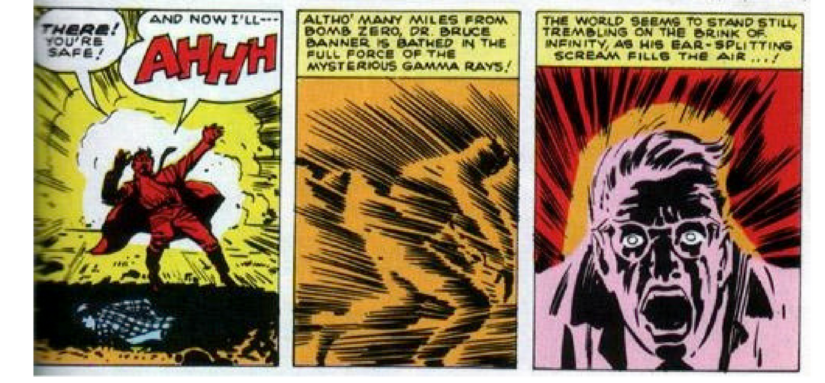
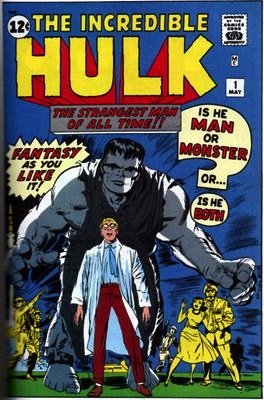

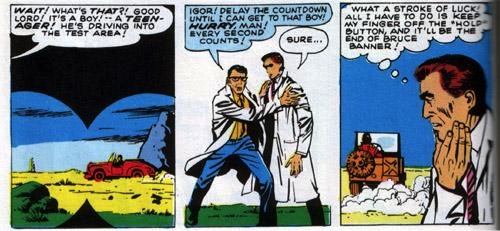

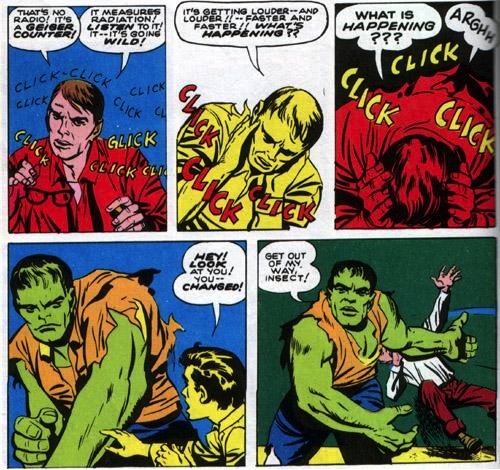
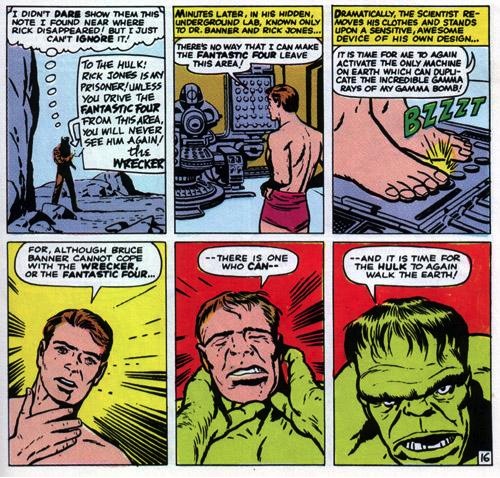





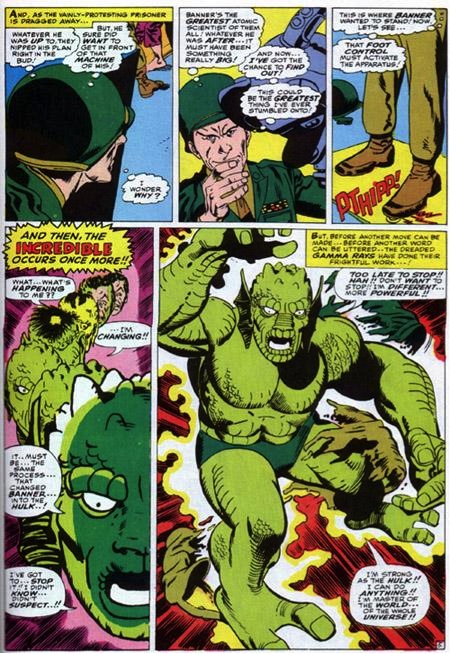

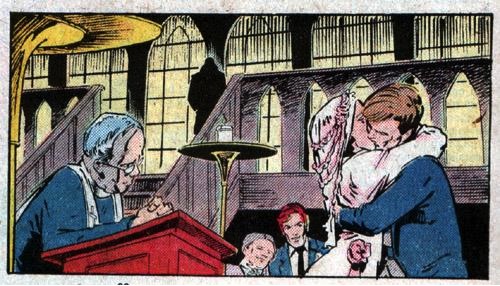

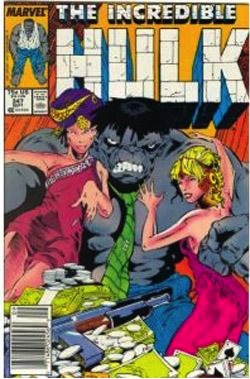



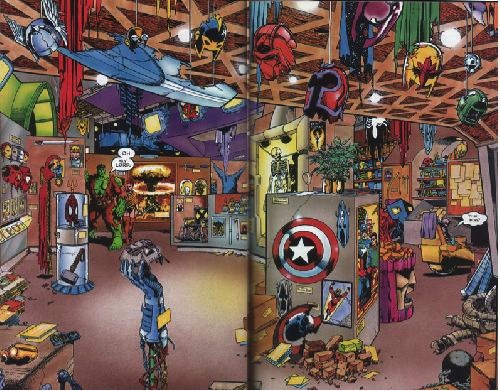
Comments are closed.